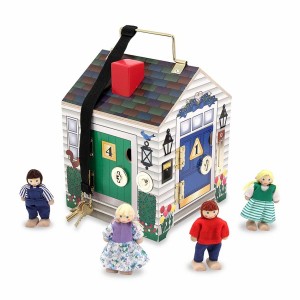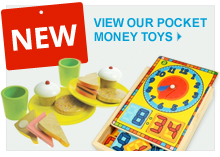

Problem solving is a crucial life skill and as such one we should make sure we help our children to develop. To be able solve problems means to be able to question and think logically, slowly and with precision in order to achieve an intended outcome. What’s more it requires the patience to not give up on a challenge immediately. These are all so important for a child when they are learning in a school environment. As these are such vital abilities, using wooden toys to help develop problem solving skills is a really good way to help your child.
Jigsaws are a simple way to help children with so many skills and problem solving is one of them: “Which way round should this go?†“Should the animal sit on its head?†The John Crane Tidlo Touch and Feel Bugs puzzle is a great first puzzle to use to develop these problem solving questioning skills.
Traditional shape sorters such as the Melissa and Doug Shape Sorting Cube not only develop mathematical shape vocabulary and fine motor skills they can also serve to develop problem solving skills. Children will work to fit the shapes into the holes and eventually will learn that they may have to consider different shaped holes or turn the shape around to a different orientation.
So how do you continue to develop these skills as your child grows? Less traditional shape sorters can be introduced to extend their learning; sorters such as the Big Jigs Farm House Sorter and the Breakfast Puzzle Sorter are lovely examples of different styles of shape sorter.
An absolute favourite of mine is the Melissa and Doug Latches board. It has so many features for children to learn from. Start by explaining to your little one that the doors open and allow them the opportunity to explore how, if they get frustrated show them how to do it and then close them again and see if your child can mimic your actions. The different locks and latches present different types of challenges and what is so wonderful is that the manipulation required to open each one requires different wrist actions, finger grips and arms movements, therefore improving motor skills at the same time. There is set of animals underneath each door which provides a reward for the child when they have successfully opened it. These animals match the colour of the door and the number on the door, both of which provide learning in art and maths respectively. Naming each animal and describing what sound it makes also develops a child’s language.
Another Melissa and Doug toy with a door theme that can develop problem solving is their Doorbell House. Each of the four sides of the house has a door with a lock and four keys are attached to open the doors. Hand-eye coordination, fine motor skills and problem solving all help a child to try each key in order to unlock the door.











